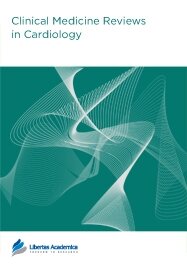

Publication Date: 10 Mar 2014
Type: Review
Journal: Clinical Medicine Reviews in Cardiology
Citation: Clinical Medicine Reviews in Cardiology 2014:3 1-16
doi: 10.4137/CMRC.S10243

The second-generation everolimus-eluting stents (EES) are loaded with everolimus, which is a powerful analog of sirolimus; the drug carrier consists of a thin layer of durable and biocompatible fluorocopolymer, and the platform is made of cobalt-chromium alloy to allow thinner struts as well as to enhance stent radial strengh, delivery, and percutaneous coronary intervention success rates. EES are safe and efficient for the treatment of coronary artery disease in a wide range of anatomic settings, where several trials show EES superior to paclitaxel-eluting stents (PES); however, the superiority of EES over sirolimus-eluting stents (SES) is not so clear as over PES. In specific profiles of subjects such as diabetic patients, women, and patients presenting acute myocardial infarction (AMI), EES are also safe and efficient. In diabetic patients, the expected superiority of EES over PES and SES has not been confirmed. EES are equally safe and effective for women as for the general population. In the AMI setting, EES promote safety and efficacy outcomes similar to those found in non-AMI patients, as well as lower stent thrombosis rates in comparison with SES and PES. In conclusion, second-generation EES are safe and efficient for treatment of coronary artery disease in a wide range of anatomic and clinical settings.
RIS citation (ENDNOTE, REFERENCE MANAGER, PROCITE, REFWORKS)
BibTex citation (BIBDESK, LATEX)

This is the most author-friendly process I have experienced. The staff were very attentive to us and kept us posted at every step of the process. They were great to work with. I commend the editorial staff for their professionalism and dedication to science and scientific publishing.
Facebook Google+ Twitter
Pinterest Tumblr YouTube